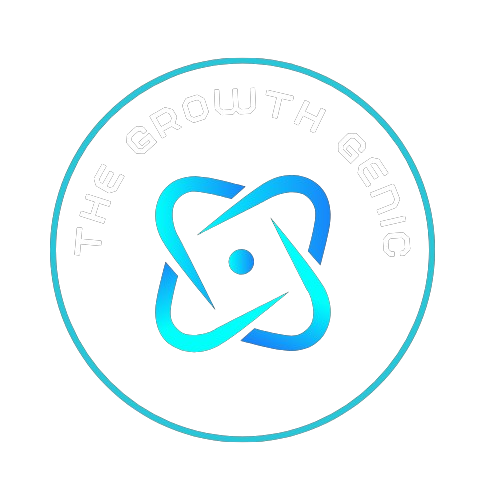Recruitment is a critical process for any organisation aiming to achieve its goals and drive growth. Understanding the intricacies of recruitment can significantly impact the success of a business. This guide delves into the essential aspects of recruitment, offering practical insights and actionable advice to ensure you attract, select, and retain the best talent.
The Importance of Recruitment
Recruitment is more than just filling vacancies; it is about identifying and bringing in individuals who can contribute to the company’s success. Effective recruitment practices help businesses build a strong workforce, which is vital for achieving strategic objectives. When done correctly, recruitment can enhance company culture, improve employee morale, and drive productivity. Moreover, it can reduce turnover rates, saving time and resources associated with frequent hiring processes. As the job market evolves, understanding the importance of recruitment allows companies to adapt and stay competitive. By prioritising recruitment, businesses can ensure they have the right people in place to navigate challenges and seize opportunities.
Recent trends have revolutionised how companies approach recruitment. With advancements in technology, the recruitment landscape has shifted significantly. Employers now leverage social media platforms, AI-driven tools, and data analytics to identify and attract potential candidates. These trends highlight the need for businesses to stay updated and flexible in their recruitment strategies. Embracing these changes can lead to more effective recruitment processes, ultimately contributing to the organisation’s long-term success.
Crafting the Perfect Job Description
Creating a clear and compelling job description is the foundation of a successful recruitment process. A well-crafted job description outlines the key roles and responsibilities of the position, ensuring potential candidates understand what is expected of them. It helps set the tone for the type of employee the company is looking to hire. To achieve this, it’s crucial to identify the essential skills and qualifications needed for the role. This involves a thorough analysis of the job requirements and the competencies that will ensure success in the position.
Writing an attractive job posting goes beyond listing duties and qualifications. It should highlight the unique aspects of the company and the benefits of working there. This can include information about company culture, growth opportunities, and any perks or benefits offered. An engaging job description can capture the interest of top talent and encourage them to apply. Additionally, it helps filter out candidates who may not be a good fit, saving time in the screening process. In a competitive job market, a compelling job description can make all the difference in attracting high-quality candidates.
Sourcing Candidates
Finding the right candidates involves a mix of traditional and modern recruitment methods. Traditional methods like job fairs, newspaper ads, and employee referrals have been effective for decades. These methods allow companies to reach a broad audience and tap into networks of potential candidates. However, relying solely on traditional methods can limit the pool of applicants, especially in today’s digital age.
Digital recruitment strategies have become increasingly important in sourcing candidates. Online job boards, company websites, and social media platforms like LinkedIn offer vast opportunities to connect with potential employees. These platforms provide a wider reach and allow for more targeted recruitment efforts. Utilising social media for recruitment can help companies engage with passive candidates who may not be actively seeking new opportunities but are open to offers. Additionally, digital recruitment tools often come with analytics features that can help track the effectiveness of job postings and refine strategies over time.
Working with recruitment agencies is another effective way to source candidates. Recruitment agencies have access to extensive databases of potential candidates and can streamline the hiring process. They can help identify qualified candidates quickly, saving time and resources. However, it’s important to choose a reputable agency with a good track record in the industry. Collaborating with recruitment agencies can be particularly beneficial for specialised roles or urgent hiring needs. By combining traditional, digital, and agency-based recruitment methods, companies can cast a wider net and increase their chances of finding the right talent.
Screening and Shortlisting Candidates
The screening and shortlisting process is crucial for narrowing down the pool of applicants to those who are most suitable for the position. Initial screening often involves reviewing resumes and cover letters to assess candidates’ qualifications and experience. This step helps identify those who meet the basic requirements of the job. Using applicant tracking systems (ATS) can streamline this process by automatically filtering out candidates who do not meet the criteria.
Conducting effective interviews is another critical aspect of screening candidates. Different types of interviews, such as behavioural and technical interviews, provide insights into candidates’ skills, experiences, and how they handle various situations. Structured interviews with a consistent set of questions can help ensure fairness and objectivity in the evaluation process. It’s also important to prepare relevant questions that probe candidates’ competencies and alignment with the company’s values and goals.
Assessing cultural fit is an essential part of the recruitment process. It’s not just about finding candidates with the right skills but also those who will thrive in the company culture. Cultural fit can influence job satisfaction, performance, and retention. During interviews, asking questions that reveal candidates’ values, work styles, and interpersonal skills can help determine if they will be a good match for the team. By thoroughly screening and shortlisting candidates, companies can increase the likelihood of hiring individuals who will contribute positively to the organisation.
Selection and Offer Process
Making a well-informed hiring decision requires careful consideration of various factors. It’s essential to evaluate candidates based on their qualifications, experience, and cultural fit. Decision-making criteria should include both technical skills and soft skills, such as communication, teamwork, and problem-solving abilities. Involving multiple stakeholders in the decision-making process can provide different perspectives and help ensure a balanced evaluation.
Once a decision is made, extending a job offer is the next step. A compelling job offer should include not only the salary but also other elements such as benefits, perks, and opportunities for growth. Clear communication of the offer details is crucial to avoid misunderstandings and ensure the candidate understands what is being offered. It’s important to present the offer in a positive and professional manner, highlighting why the candidate is a good fit for the role and the company.
Negotiation is a common part of the offer process. Candidates may have questions or requests regarding salary, benefits, or other aspects of the offer. It’s important to approach negotiations with a mindset of finding a win-win solution. Being flexible and open to discussions can help reach an agreement that satisfies both parties. Once the offer is accepted, the focus shifts to preparing for the new employee’s arrival and ensuring a smooth transition into the company.
Onboarding New Employees
Effective onboarding is essential for integrating new employees into the company and setting them up for success. A well-structured onboarding process helps new hires feel welcome, understand their roles, and become productive members of the team quickly. It begins with a comprehensive orientation programme that introduces new employees to the company culture, policies, and procedures.
Providing mentorship and training during the onboarding process is crucial for new employees’ development. Assigning a mentor or buddy can help new hires navigate their new environment and build relationships within the team. Training sessions should cover both job-specific skills and broader company knowledge. Ongoing support and feedback during the initial period can help address any challenges and ensure a smooth transition.
Measuring the success of the onboarding process is important for continuous improvement. Gathering feedback from new hires and monitoring their performance can provide insights into the effectiveness of the onboarding programme. Key metrics to track include time-to-productivity, employee engagement, and retention rates. By continually refining the onboarding process, companies can enhance new employees’ experiences and set them up for long-term success.
Retention Strategies
Retaining talented employees is as important as attracting them. Employee engagement plays a crucial role in retention. Engaged employees are more likely to stay with the company, perform well, and contribute positively to the organisation. Building a positive work environment where employees feel valued and recognised is key to maintaining high levels of engagement.
Providing career development opportunities is another effective retention strategy. Employees are more likely to stay with a company that invests in their growth and development. This can include offering training programmes, mentorship, and clear paths for career advancement. Regularly discussing career goals and providing opportunities for skill development can help employees feel supported and motivated.
Creating a positive work environment also involves promoting work-life balance and ensuring employees have the resources they need to succeed. This includes offering flexible work arrangements, wellness programmes, and fostering a culture of respect and collaboration. Addressing employee concerns and maintaining open lines of communication can help identify potential issues early and prevent turnover. By prioritising employee retention, companies can build a loyal and committed workforce that drives long-term success.
Recruitment Metrics and Analytics
Tracking recruitment metrics is essential for evaluating the effectiveness of recruitment strategies and making data-driven improvements. Key recruitment metrics include time-to-hire, cost-per-hire, and quality of hire. Time-to-hire measures the average time taken to fill a position, while cost-per-hire calculates the total expenses involved in the recruitment process. Quality of hire assesses the performance and retention of new employees, providing insights into the effectiveness of the recruitment efforts.
Using data analytics in recruitment can help identify patterns and trends that inform decision-making. For example, analysing the sources of successful hires can reveal which recruitment channels are most effective. Data can also help optimise the candidate screening process by identifying factors that predict job performance and cultural fit. By leveraging data analytics, companies can refine their recruitment strategies, improve efficiency, and enhance the overall quality of hires.
Continuous improvement in recruitment processes is essential for staying competitive in the ever-evolving job market. Regularly reviewing recruitment metrics and seeking feedback from hiring managers and candidates can identify areas for improvement. Implementing changes based on these insights can lead to more effective and efficient recruitment processes. By focusing on continuous improvement, companies can ensure they attract and retain the best talent, contributing to their long-term success.










